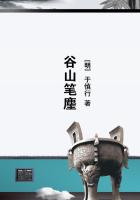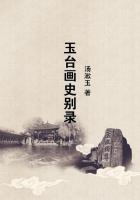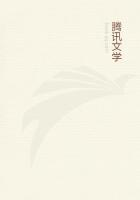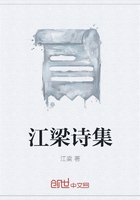The thoroughfare which they emerged upon, with the cathedral ending the prospective, was full of the holiday so near at hand. The narrow sidewalks were thronged with people, both soldiers and civilians, and up the middle of the street detachments of military came and went, halting the little horse-cars and the huge beer-wagons which otherwise seemed to have the sole right to the streets of Wurzburg; they came jingling or thundering out of the aide streets and hurled themselves round the corners reckless of the passers, who escaped alive by flattening themselves like posters against the house walls. There were peasants, men and women, in the costume which the unbroken course of their country life had kept as quaint as it was a hundred years before; there were citizens in the misfits of the latest German fashions; there were soldiers of all arms in their vivid uniforms, and from time to time there were pretty young girls in white dresses with low necks, and bare arms gloved to the elbows, who were following a holiday custom of the place in going about the streets in ball costume. The shop windows were filled with portraits of the Emperor and the Empress, and the Prince-Regent and the ladies of his family; the German and Bavarian colors draped the facades of the houses and festooned the fantastic Madonnas posing above so many portals. The modern patriotism included the ancient piety without disturbing it; the rococo city remained ecclesiastical through its new imperialism, and kept the stamp given it by the long rule of the prince-bishops under the sovereignty of its King and the suzerainty of its Kaiser.
The Marches escaped from the present, when they entered the cathedral, as wholly as if they had taken hold of the horns of the altar, though they were far from literally doing this in an interior so grandiose. There area few rococo churches in Italy, and perhaps more in Spain, which approach the perfection achieved by the Wurzburg cathedral in the baroque style. For once one sees what that style can do in architecture and sculpture, and whatever one may say of the details, one cannot deny that there is a prodigiously effective keeping in it all. This interior came together, as the decorators say, with a harmony that the travellers had felt nowhere in their earlier experience of the rococo. It was, unimpeachably perfect in its way, "Just," March murmured to his wife, "as the social and political and scientific scheme of the eighteenth century was perfected in certain times and places. But the odd thing is to find the apotheosis of the rococo away up here in Germany. I wonder how much the prince-bishops really liked it. But they had become rococo, too! Look at that row of their statues on both sides of the nave! What magnificent swell! How they abash this poor plain Christ, here; he would like to get behind the pillar; he knows that he could never lend himself to the baroque style. It expresses the eighteenth century, though. But how you long for some little hint of the thirteenth, or even the nineteenth."
"I don't," she whispered back. "I'm perfectly wild with Wurzburg.
I like to have a thing go as far as it can. At Nuremberg I wanted all the Gothic I could get, and in Wurzburg I want all the baroque I can get.
I am consistent."
She kept on praising herself to his disadvantage, as women do, all the way to the Neumunster Church, where they were going to revere the tomb of Walther yon der Vogelweide, not so much for his own sake as for Longfellow's. The older poet lies buried within, but his monument is outside the church, perhaps for the greater convenience of the sparrows, which now represent the birds he loved. The cenotaph is surmounted by a broad vase, and around this are thickly perched the effigies of the Meistersinger's feathered friends, from whom the canons of the church, as Mrs. March read aloud from her Baedeker, long ago directed his bequest to themselves. In revenge for their lawless greed the defrauded beneficiaries choose to burlesque the affair by looking like the four-and-twenty blackbirds when the pie was opened.
She consented to go for a moment to the Gothic Marienkapelle with her husband in the revival of his mediaeval taste, and she was rewarded amidst its thirteenth-century sincerity by his recantation. "You are right! Baroque is the thing for Wurzburg; one can't enjoy Gothic here any more than one could enjoy baroque in Nuremberg."















